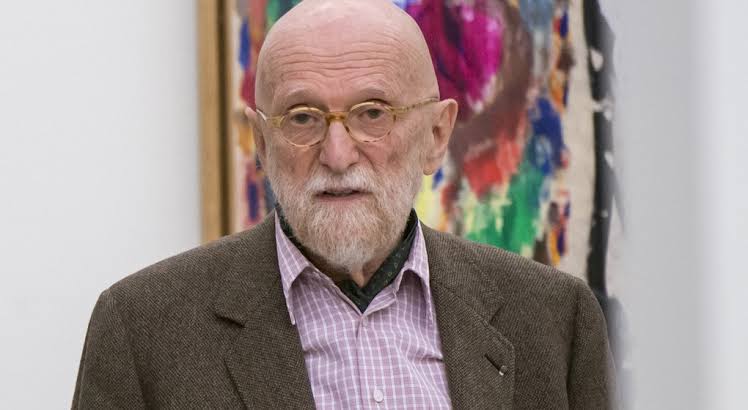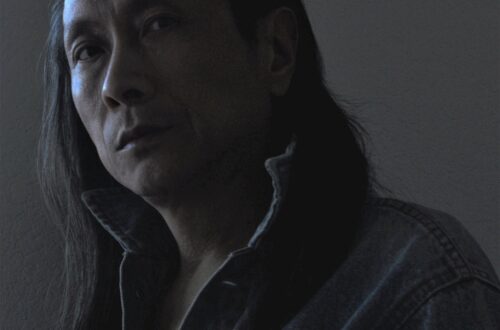The labyrinth of abstract expressionism is where Pierre Alechinsky stands out from the crowd, his brushstrokes telling stories about the greatness of the mind and soul. Born in Brussels in 1927, the life of an artist named Alechinsky was shaped by infinite curiosity and unrelenting pursuit of subconscious worlds. While his early works were inspired by the avant-garde COBRA movement and his late compositions were celebrated for their dynamic quality, Alechinsky’s works move beyond traditional restrictions, taking the audience into a world where colors dance and forms merge. Among his best pieces is the “Central Park” work that reflects Alechinsky’s power to bring to life the essence of iconic landscapes through his unique artistic style. In this article, we get to the bottom of Alechinsky’s vision, dissecting the complexities of “Central Park” and its fascinating plot.
Who was Pierre Alechinsky?

Pierre Alechinsky who is a Belgian painter and a printer born in Brussels in 1927 became a famous figure in the middle of the twentieth century. Celebrated for the manner in which he combines calligraphic brushwork with abstract conventions, Alechinsky’s paintings often leave the viewer guessing on what it is. Thus, his artistic mission commences at the École nationale supérieure d’Architecture et des Arts décoratifs in Brussels, initially focusing on illustration and typography. But his acquaintance with COBRA movement (Copenhagen, Brussels, Amsterdam) in the late 1940s made the deepest impact on his art. Alechinsky’s art became known for an abundance of color, irregular arrangements and experiments with the subconscious.
FUN FACT: Despite his vibrant and dynamic artworks, Pierre Alechinsky is known to be quite modest and reserved, often shying away from the spotlight despite his international acclaim.
His Career
Throughout Alechinsky`s life, he tried to work with different media, such as painting, printmaking and illustration. He worked together with famous artists like Asger Jorn who was also a COBRA member and practiced various methods including etching, lithography and woodcut. Diversity of his work reputation him as an international artist with shows in top galleries and museums around the globe.
What is Happening in Central Park?

| Artist | Pierre Alechinsky |
| Date Created | 1989 |
| Medium | Oil on canvas |
| Genre | Abstract Expressionism |
| Period | 20th Century |
| Dimensions | 162 cm × 130 cm (64 in × 51 in) |
| Series/Versions | N/A |
| Where is it housed? | Private Collection |
It is one of Alechinsky’s famous works, “Central Park,” that manages to bring out the true nature of New York City renowned green space seen through the artist’s unique perspective. This masterpiece by Alechinsky which dates back to 1969 is a testament to his skill at abstraction and adding emotional dimensions to landscapes. With the help of vivid colors and bold strokes, “Central Park” leads the viewers on a visual trip through the vast landscapes and the buoyant atmosphere of the park. Alechinsky’s interpretation of Central Park is not only restricted to just the visual representation but also a multisensory experience and a colorful expression of urban environment. “Central Park,” from the bustling energy of the city streets to the soothing tranquility of a forest, captures the very nature of a place, ageless and full of change at the same time.
Composition
“Central Park” by Pierre Alechinsky is a work of art that manifests in a vibrant, dynamic composition through the use of heavily textured brushstrokes, bright colors, and intricate details. The picture translates the spirit of the famous New York City park into the language of his distinctive art style. Through superimposed forms and textures that seem to merge together, Alechinsky establishes the sense of depth and movement, making the viewer travel visually through the park’s large territories and vibrant life.
Interesting Facts about the Artwork
Inspiration from the Urban Landscape: Alechinsky’s “Central Park” reflects his fascination with urban environments. The painting captures the energy and dynamism of New York City, showcasing Alechinsky’s interpretation of the iconic park.
Expressive Brushwork: Alechinsky’s signature calligraphic brushwork is evident in “Central Park,” with bold, gestural strokes that evoke movement and vitality. Through his spontaneous mark-making, Alechinsky creates a sense of immediacy and spontaneity within the artwork.
Layers of Meaning: Like many of Alechinsky’s works, “Central Park” invites viewers to interpret its layers of meaning. Beyond its surface depiction of a city park, the painting embodies themes of exploration, transformation, and the interconnectedness of urban life.
Dynamic Composition: Alechinsky’s composition in “Central Park” is dynamic and multifaceted, with overlapping forms and intricate details that draw the viewer’s eye across the canvas. Through his manipulation of space and perspective, Alechinsky creates a sense of depth and movement within the artwork.
Artwork Spotlight: “Voyage”

Not only “Central Park” but also “Voyage” of Alechinsky which is the other artwork that expresses his special vision. By means of vibrant colors and energetic brush strokes, “Voyage” is a metaphor of a literal journey through the artist’s inner world. Through this enchanting art work, the artist keeps exploring the notion of human experiences and art’s ability to transform.
Conclusion
In “Central Park,” Pierre Alechinsky offers an artistic interpretation of the liveliness and lively nature of one of the known icons of New York City to the viewers. In terms of its lively structure, expressive brushwork, and rich meanings, the painting “Central Park” serves as an evidence of his lasting legacy in abstract expressionism. While more people delve deeper into the labyrinth of hues and patterns, they are actually embarking on a visual journey that goes beyond the limitations of time and space; the trip contains the voice of both the park and the human nature.













